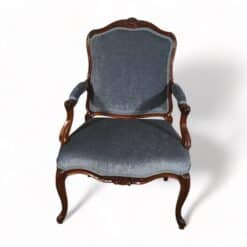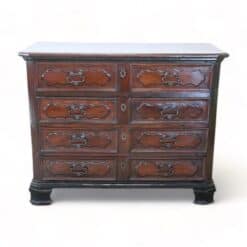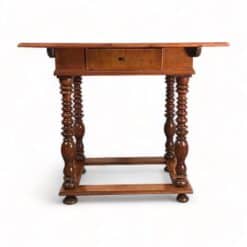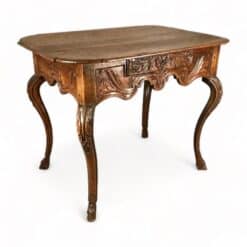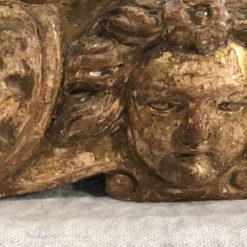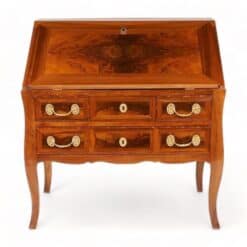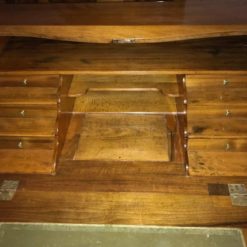Best Sellers
Furniture, Style, Styylish History
The Elegance Rediscovered: A Dive into the History of Baroque Tables
The Elegance Rediscovered: A Dive into the History of Baroque Tables and Why They Belong in Your Home
The world of interior design is a canvas where history and aesthetics merge to create unique, captivating spaces. Among the myriad furniture styles that are featured in homes over the centuries, the Baroque period stands out as a timeless testament to opulence, extravagance, and intricate craftsmanship. This era’s charm is especially poignant with the Baroque table- a piece that serves practical purposes and is an embodiment of artistic expression. In this exploration of the history of Baroque tables, we uncover their origins, evolution, and present-day relevance to reveal how they add character to a room of any style.
A Glimpse into Baroque Elegance: Origins and Characteristics
The Baroque era spanned from the late 16th to early 18th century. Its defining characteristic is the desire to create grand, visually striking interiors. Additionally, during this time, art, architecture and design flourished, all seeking elaborate ornamentation and dramatic elements. The baroque table came from this context and embodied the essence of the period’s artistic fervor. Baroque tables boasted distinctive features that set them apart. Ornate carvings, intricate detailing, and curvilinear forms defined their style. Elaborate motifs like nature, cherubs, and mythological figures decorated the surfaces that create an opulent visual narrative. Also, the use of rich, dark woods like walnut and mahogany emphasized their luxurious appeal.
Evolution through the Ages: Baroque Tables in Different Styles
As time progressed, the Baroque style evolved and gave birth to various sub-styles that retained the opulence of the original, while infusing unique regional and artistic influences. Some of the most stunning Baroque Tables are native to Germany, Switzerland, Italy and Belgium, and are all available on Styylish!
German Baroque Style
German Baroque furniture stands out with its intricately carved designs that often draw from natural motifs and religious symbolism. These dynamic, asymmetrical pieces are skillfully crafted of dark woods such as walnut and oak, reflecting regional preferences and rich ornamentation. This walnut table is a perfect example of the dynamic ornamentation of German baroque style. Its remarkable spiraling legs are joined together by a curved stretcher.

The legs give the entire table a unique personality that pops out in every room it occupies. The legs support a tabletop’s central medallion with decorative roman weapons and features two commanders in armor. This type of Roman symbolism is a commonly occurs in South German Baroque style pieces.
The German Take on the Baroque Game Table
While French Baroque exemplifies courtly culture and ornamental aesthetics, German Baroque valued functional practicality. This exceptional German Baroque table is multi-functional. While its straight back allows it to act as a console table, it also opens up to become an exquisite game table with a green shellac surface. The table’s top features intricate patterns of maple and walnut veneer, showcasing the master craftsmanship of the era.
German Center Table
This unique Baroque Center Table from South Germany is made of a combination of fine woods such as walnut, plum, maple and thuya burl wood. This stunning piece will be a focal point in any living room. This table is a functional piece of art with its exquisite geometric design on the table top and its black twisted ebonized legs, and could display any art, photographs or flowers in your home.

Swiss Baroque Style
While German Baroque furniture tends to be slightly more extravagant and theatrical in its design, Swiss Baroque Furniture leans toward a more refined and practical elegance. This extendable Swiss farm table is made of a massive walnut wood. It contains the classic feature of the slate slap in the center of the table, which is perfect for holding hot pots. This table is perfect for sharing meals with friends and family, as it can seat up to ten people around it. Its dark wood lathed legs are connected by a crossed stretcher, making it extremely stable.
Italian Baroque Tables
What sets Italian Baroque furniture apart is the Italian artisans’ masterful incorporation of sculptural elements into furniture, creating pieces that almost transcend their utilitarian purpose to become works of art. Italian Baroque characteristics are intricate carvings, voluptuous curves, and opulent materials. This stunning cherry wood Fratino Table is a perfect example of this style. Monastaries and convents traditionally used Fratino Tables for dining. Its intricate legs are the perfect example of the classic Italian Baroque style, carved in a lyre-shaped walnut.

Console Tables
Console tables first emerged in Europe in the 17th century, as furniture made for display became more sought after. These are incredibly rare console tables, and they are of a walnut wood. Additionally, these console tables feature a central drawer for any storage. Further, the tables will compliment any living area or entryway.

Belgian Baroque Style
Belgian Baroque Tables often have decorative carved motifs inspired by nature, such as foliage and flowers. The furniture pieces tend to have bold, robust forms with curvaceous lines that give them a sense of movement and vitality. This Baroque table from Flanders is the perfect example of Belgium’s Baroque style. Its beautifully hand-carved oak with rocaille, flower and leaf decorations are full of charm. This piece would compliment any living room or serve as a perfect piece for an entryway.

Baroque Tables: Historical Relics Fit for Any Home
In today’s era of minimalist and modern design, the resurgent popularity of Baroque tables may appear surprising. Yet, it attests to the timeless appeal of their intricate craftsmanship and artistic flair. Baroque tables uniquely integrate into rooms of any style as versatile and captivating additions. Their ornate detailing and rich craftsmanship inject elegance and opulence into a variety of spaces, thus enhancing the room’s classic charm. Ultimately, the allure of Baroque tables transcends design boundaries, making them transformative pieces that elevate and harmonize with the aesthetic of any room.
















